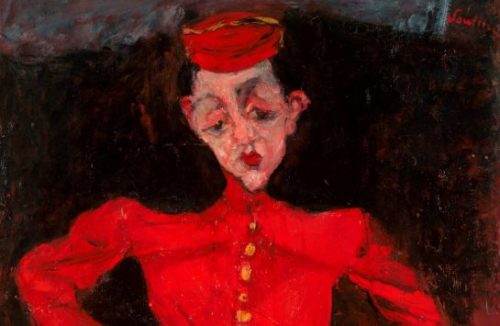As the dissertation deadline looms, we’re spending some time getting to know the current MA Documenting Fashion students. Lucy, the co-editor of this blog, discusses Tamara de Lempicka, lidos and self-styling via eBay.
What is your dissertation about?
I’m writing my dissertation on the artist Tamara de Lempicka, looking at her life as a process of self-fashioning. She’s most famous for the portraits (and self-portraits) she painted while living in Paris in the 1920s and 30s, but lots of people were/are aware of her because of her persona and her distinctive look. The details of her life are sketchy in lots of places – some biographers believe that she lied about her age right up until her death in 1980 – and she seems to have actively cultivated this image of herself as a kind of glamourous, film star-esque aristocrat. She would commission photographers to capture her in designer clothes, always with painted red lips and nails. She wore a lot of accessories and had a particular penchant for hats, in her later years matching her hat to her outfit. For most of her life, she seemed to crave independence, marrying her second husband on the promise that she could enjoy his money and his title but continue her own, largely separate life. Once, when she failed to return home to spend Christmas with her young daughter, leaving her in the care of her grandmother, the two of them burned her collection of designer hats in retaliation.

One of her most famous paintings, a self-portrait commissioned as the cover of Die Dame, shows her in the driver’s seat of a green Bugatti – in reality, she drove a yellow Renault. The image has been hailed as a symbol of the modern woman, and for me, it says a lot about how she saw herself. It can be tricky to unpick all the anecdotes surrounding her, which she often reworked and retold to portray herself in a flattering light, but researching her life has taught me that her moulding of the truth was an extension of her self-styling. It’s been fascinating getting to know the many overlapping sides of her.

What is your favourite thing that you’ve written/worked on/researched this year?
I enjoyed writing my first essay on Margiela and memory, for which I watched the documentary Martin Margiela: In His Own Words. It was clear that his childhood memories played an essential role in his work and that his ideas around creating memories influenced his creativity. For example, at one show, the models – who walked among the audience – were perfumed with patchouli, playing on sensory memory. For my second essay, I looked at hundreds of images from ‘the golden age of the lido’ in 1930s Britain, which was, for me, great fun.

What is something you’ve read this year that you would recommend to anyone?
Early in the year, we read the first chapter from Daniel Miller’s Stuff, titled ‘Why Clothing is not Superficial’. His discussion of Trinidadian ideas of the self as constantly evolving, existing on the surface (rather than somewhere buried within, built up incrementally over time) so that it must be sustained day by day in actions and choices – including in wardrobe choices – deepened my understanding of why clothes feel so important.
Where do you get your clothes from?
I’m relatively serious about eBay. Closely monitoring saved search alerts and frantically trying to outbid any rivals in the final seconds of an auction has brought me lots of joy and frustration over the years, as well as a wardrobe full of things that I love to look at but that don’t necessarily fit me well. I keep a collection of screenshots of the wildest photos that people use to sell their clothes. Also, charity shops in fancy areas and anything that my friends are getting rid of.

How would you describe your style?
It was described to me today as ‘very last season Arket’, which I think is fairly accurate. I like to look at extravagant, sparkly clothes, but I want to feel as comfy as I can get away with, so cosy jumpers in the winter, cotton dresses in the summer and when in doubt, jeans. Anything that could be pyjamas but could also be worn out is the goal.
Bibliography
Claridge, Laura. Tamara de Lempicka: A Life of Deco and Decadence (London, 2001)
De Lempicka-Foxhall, Kizette and Charles Phillips. Passion by Design: The Art and Times of Tamara de Lempicka (New York, 1987)
Holzemer, Reiner. Martin Margiela: In His Own Words, cinematographer Toon Illegems (2020; London: Dogwoof)
Miller, Daniel. ‘Why Clothing is not Superficial’ in Stuff (Cambridge, 2010), pp. 12-41


















